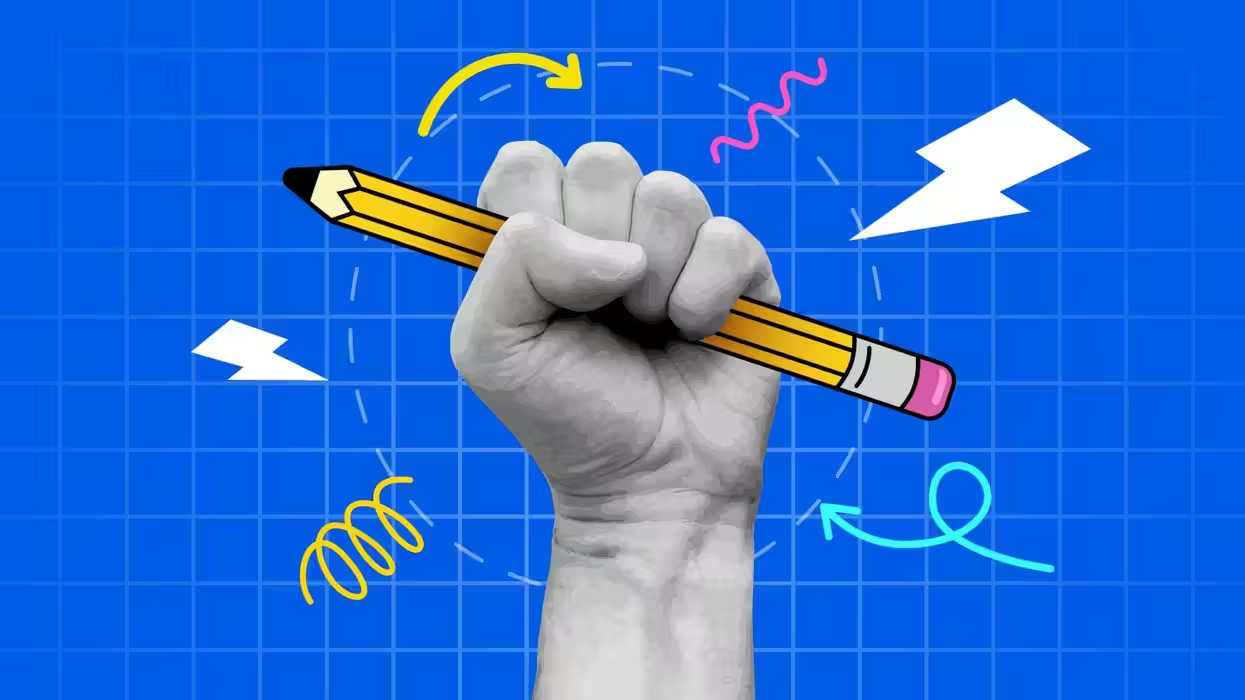
© 2025 Blaze Media LLC. All rights reserved.
"...will make it the most toxic falling satellite ever."
MOSCOW (The Blaze/AP) -- The Russian Federal Space Agency has the worst luck with getting equipment to and from Mars. Since the 1960 only two of its 18 unmanned missions to Mars have been completely successful. It it is rushing to right another mission gone awry.
A space probe became stuck in Earth's orbit Wednesday after an equipment failure, raising fears it could come crashing down and spill tons of highly toxic fuel on Earth unless engineers can steer it back to its flight path.
James Oberg, a NASA veteran who has written books on the Russian space program and who now works as a space consultant, said it's still possible to regain control over the probe.
"This is not an impossible challenge," Oberg said in an email to The Associated Press. "Nothing irreversibly bad has happened, the full propellant load is still available, and short-term 'stay healthy' maneuvers can be performed" like deploying the craft's solar panels to boost its power.
He warned, however, that if controllers failed to bring the Phobos-Ground back to life, the tons of highly toxic fuel it carries would turn it into the most dangerous spacecraft ever to fall from orbit. The U.S. space agency and other space debris experts are far less worried. They believe the fuel will probably explode harmlessly in Earth's upper atmosphere.
The spacecraft was headed for one of Mars' two moons when it developed technical problems.
U.S. space and Defense Department officials are tracking it. Officials at NASA in Washington figure it will be at least a week, maybe more, before the errant space probe falls back to Earth, if it does. The Russians are trying to get it back on course.
NASA chief debris scientist Nicholas Johnson says the spacecraft's orbit is already starting to degrade slightly.
"From the orbits we're seeing from the U.S. Space Surveillance Network, it's going to be a couple weeks before it comes in," Johnson said Wednesday afternoon. "It's not going to be that immediate."
The unmanned $170 million Phobos-Ground craft was successfully launched by a Zenit-2 booster rocket just after midnight Moscow time Wednesday (2016 GMT Tuesday) from the Baikonur cosmodrome in Kazakhstan. It separated from the booster about 11 minutes later and was supposed to fire its engines twice to set out on its path toward Mars, but never did. The craft was aiming to get ground samples from Phobos, one of Mars' two moons.
The mishap was the latest in a series of recent Russian failures that have raised concerns about the condition of the country's space industries.
Federal Space Agency chief Vladimir Popovkin said neither of the two engine burns worked, probably because the craft's orientation system failed. He said engineers have three days to reset and fix the spacecraft's computer program before its batteries die - but the space agency later said the probe's orbit and its power sources could allow it to circle the Earth for about two weeks.
Russia news agencies cited space experts who offered widely varying estimates of how long the craft could stay in orbit before crashing down - from five days to one month.
"About seven tons of nitrogen teroxide and hydrazine, which could freeze before ultimately entering, will make it the most toxic falling satellite ever," he said. "What was billed as the heaviest interplanetary probe ever may become one of the heaviest space derelicts to ever fall back to Earth out of control."
Oberg said such a crash could cause significantly more damage than the Russian Mars-96 that crashed in the Andes Mountains or the American USA 193 spy satellite that was shot down by a U.S. Navy missile in 2008 to prevent it from splashing its toxic fuel.
The Russian rescue effort Wednesday was being hampered by a limited earth-to-space communications network that already forced flight controllers to ask people in South America to help find the spacecraft. Amateur astronomers were the first to spot the trouble when they detected the craft was stuck in an Earth orbit.
The Phobos-Ground was Russia's first interplanetary mission since a botched 1996 robotic mission to Mars, which failed when the probe crashed shortly after the launch due to an engine failure.
The spacecraft is 13.2 metric tons (14.6 tons), with fuel accounting for a large share of its weight. It was manufactured by the Moscow-based NPO Lavochkin, which specializes in interplanetary vehicles.
Data Russia shared with NASA shows that about 11 metric tons of the spacecraft is fuel, Johnson said. The key is whether that fuel remains in liquid form or freezes. If it's liquid it would harmlessly blow up about 50 miles (80 kilometers) above ground, Johnson said. But if frozen, it could fall to Earth posing more of a hazard.
Most U.S. space debris experts believe it will likely stay liquid.
"We've had much larger objects than this come down and not have a problem," said William Ailor of the Aerospace Corp.'s Center for Orbital and Reentry Debris Studies.
The company also designed the craft for Russia's botched 1996 launch and the two probes sent to Phobos in 1988, which also failed. One was lost a few months after the launch due to an operator's mistake, and contact was lost with its twin when it was orbiting Mars.
The Russian space agency responded to the failures by promising to establish its own quality inspection teams at rocket factories to tighten oversight over production quality.
In contrast with the failures that dogged Soviet and Russian efforts to explore Mars, a succession of NASA's landers and rovers, including Spirit and Opportunity, have successfully studied the Red Planet.
If Russian space experts manage to fix the Phobos-Ground, it should reach Mars orbit in September 2012 and land on Phobos in February 2013. The return vehicle is expected to carry up to 200 grams (7 ounces) of ground samples from Phobos back to Earth in August 2014.
It is arguably the most challenging unmanned interplanetary mission ever. It requires a long series of precision maneuvers for the probe to reach the potato-shaped moon measuring just 20 kilometers (over 12 miles) in diameter, land on its cratered surface, scrape it for samples and fly back.
Scientists had hoped that studies of Phobos' surface could help solve the mystery of its origin and shed more light on the genesis of the solar system. Some believe Phobos is an asteroid captured by Mars' gravity, while others think it's debris from when Mars collided with another celestial object.
China contributed to the mission by adding a mini-satellite that is to be released when the craft enters an orbit around Mars on its way to Phobos. The 115-kilogram (250-pound) satellite, Yinghuo-1, will become the first Chinese spacecraft to explore Mars, studying the planet during two years in orbit.
Here is footage of yesterday's launch:
This article has been updated for clarity.
Want to leave a tip?
We answer to you. Help keep our content free of advertisers and big tech censorship by leaving a tip today.
Want to join the conversation?
Already a subscriber?
more stories
Sign up for the Blaze newsletter
By signing up, you agree to our Privacy Policy and Terms of Use, and agree to receive content that may sometimes include advertisements. You may opt out at any time.
Related Content
© 2025 Blaze Media LLC. All rights reserved.
Get the stories that matter most delivered directly to your inbox.
By signing up, you agree to our Privacy Policy and Terms of Use, and agree to receive content that may sometimes include advertisements. You may opt out at any time.







